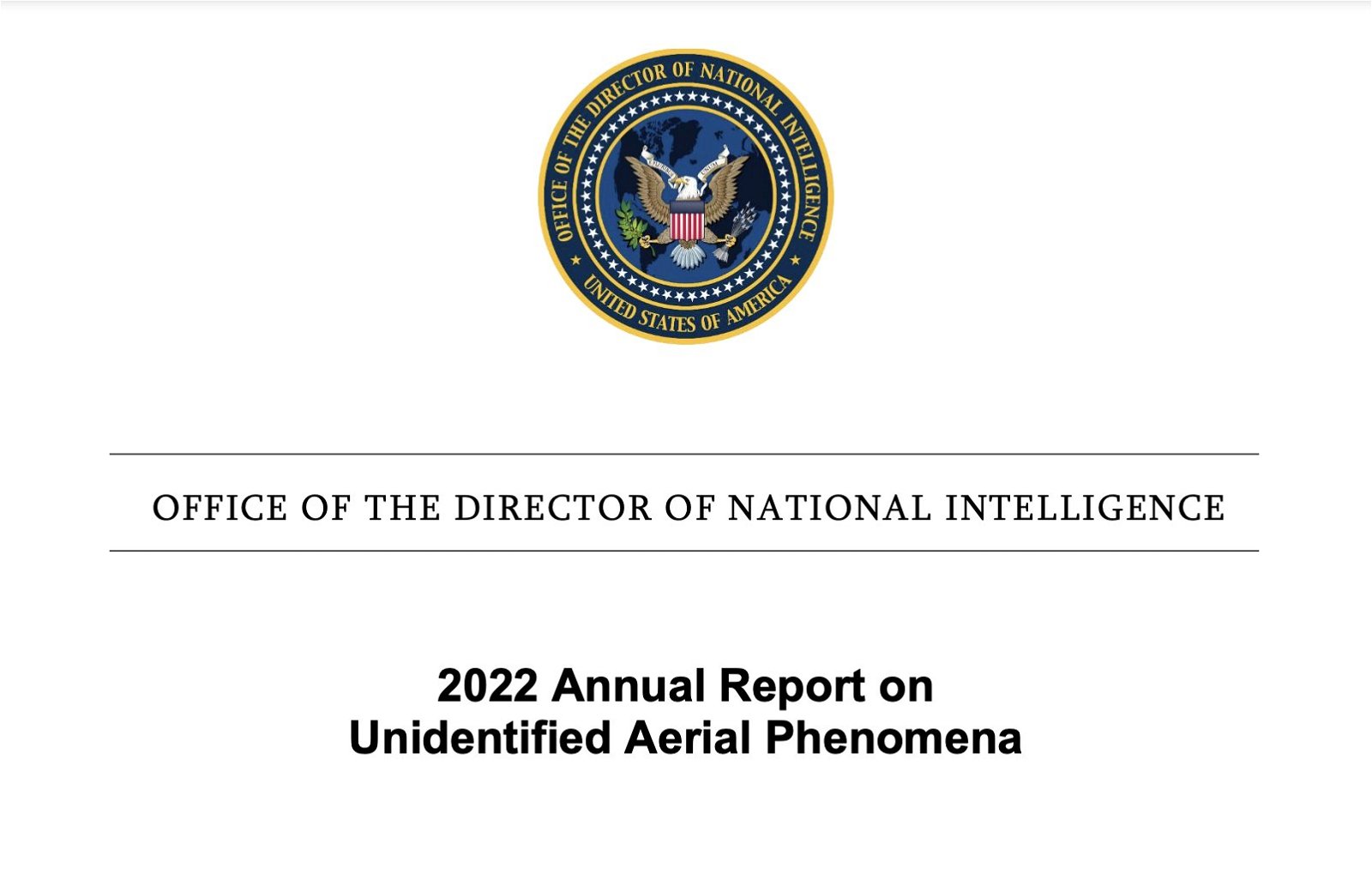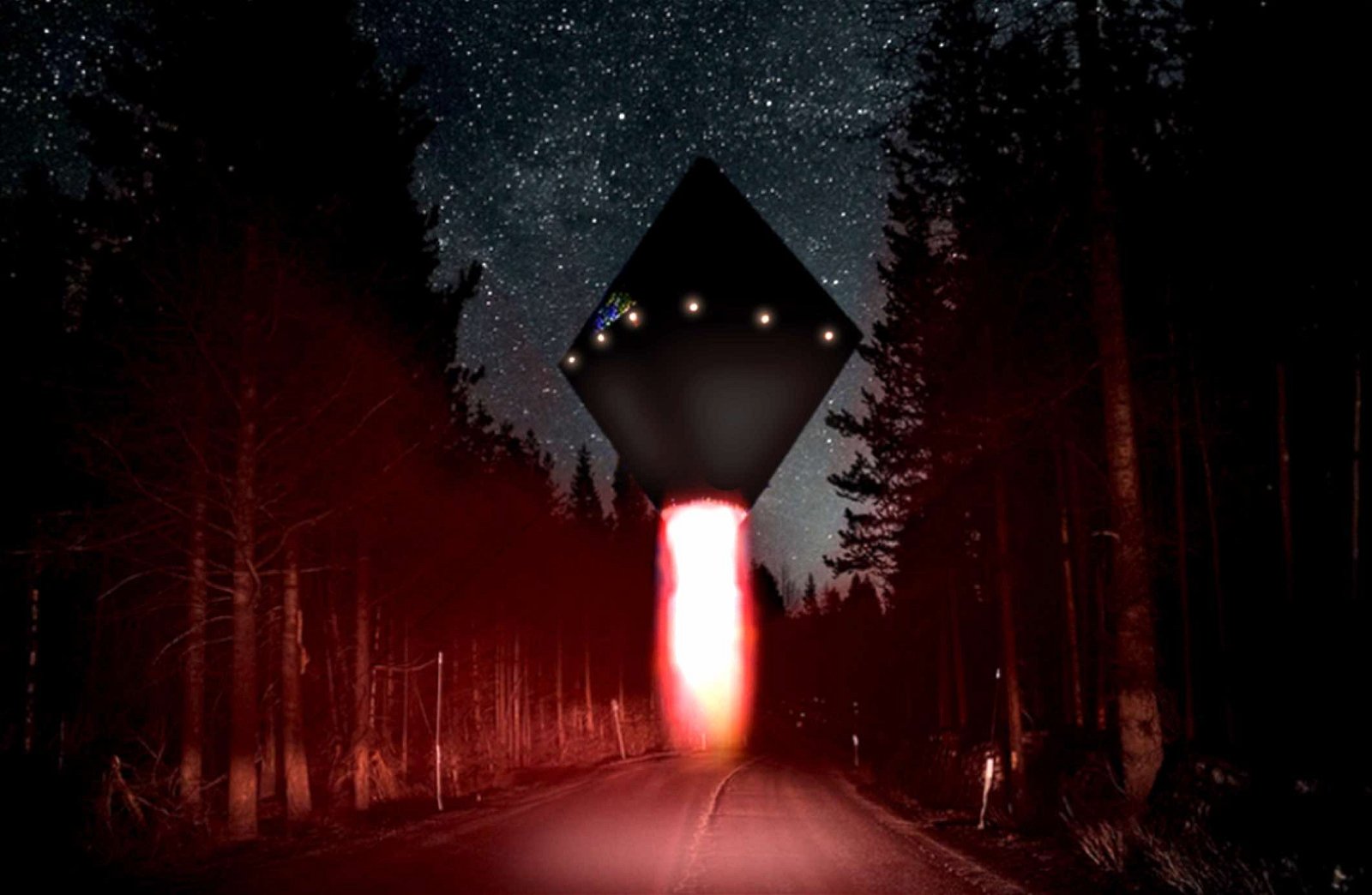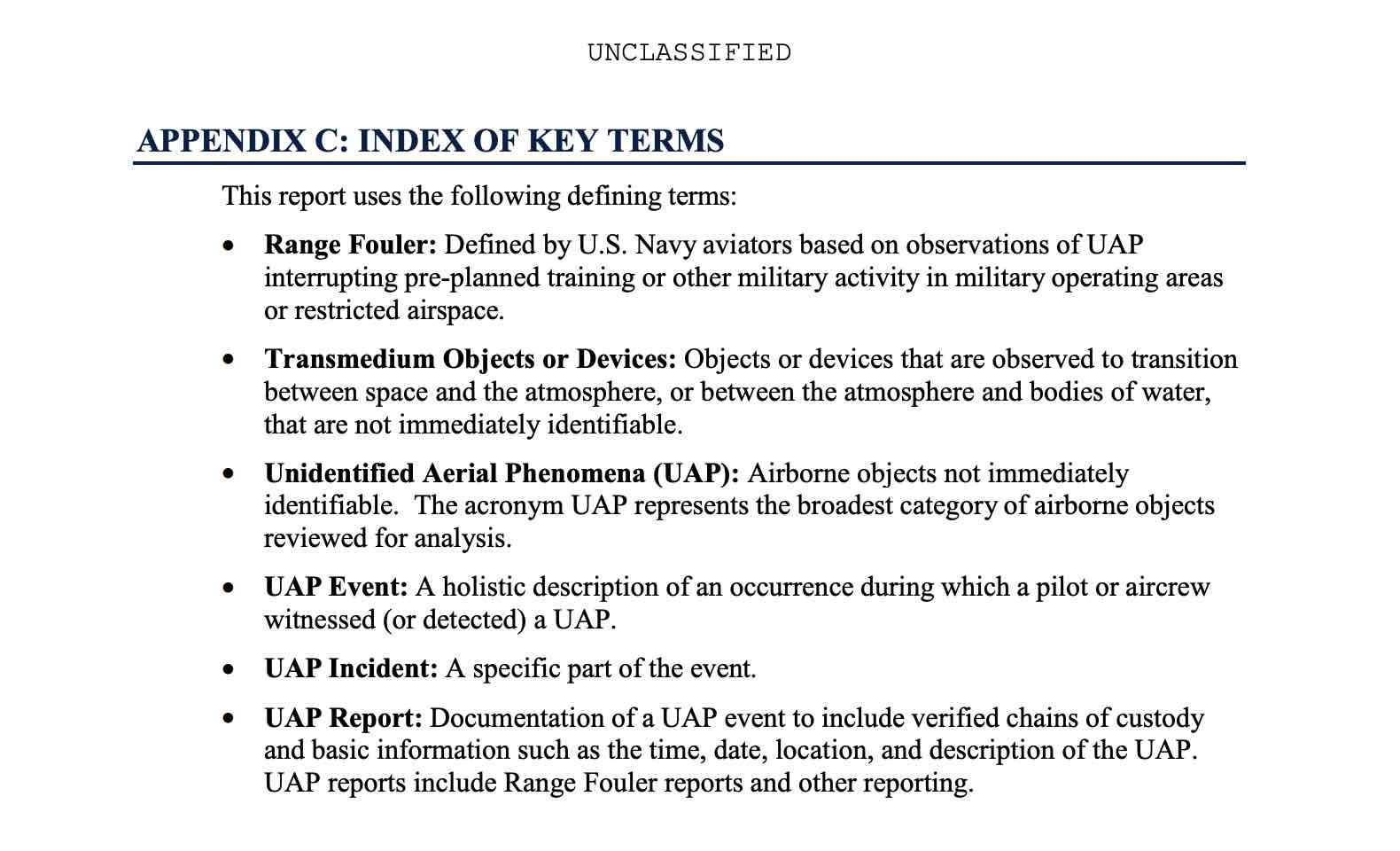

Welcome to this week’s installment of The Intelligence Brief newsletter… with the long-awaited delivery of the next installment of the DOD’s investigations into UAP finally appearing at the website of the ODNI in recent days, our double-sized analysis this week will be focusing on four key takeaways you might have missed from the 2022 Annual Report on UAP (which, given the choice in wording used, seems to have been the intent of the ODNI report’s authors).
Specifically, we’ll be looking at 1) which version of “UAP” the authors went with in the report, and what that might convey about when the current draft was completed, 2) whether or not AARO is aware of the existence of “health implications” related to UAP, 3) why one rather obscure Navy term is defined, but never actually used in the report, and 4) whether AARO is collecting information on purported “transmedium” capabilities of some UAP.
Sign up here to have The Intelligence Brief newsletter sent to your inbox each week.
Quote of the Week
“Continued reporting and robust analysis are providing better fidelity on UAP events, but many cases remain unresolved.”
– 2022 Annual Report on UAP
Before we get into our analysis of the ODNI’s 2022 UAP report, a few other stories we’re covering include how Israeli scientists have confirmed the first experimental observation of Cherenkov radiation confined in two dimensions, according to new research. Elsewhere, physicists working at the DIII-D National Fusion Facility (NFF) are currently involved in tests with materials they hope to use in the construction of next-gen fusion reactors. And in a separate series of recent experiments, scientists say they have discovered a way to turn prevent fear responses by providing electrical stimulation to a specific brain region.
Moving over to video news, be sure to check out Chrissy Newton’s recent interview with Dr. Chance Glenn on Rebelliously Curious, where he discusses warp drive theory, how his take on this futuristic propulsion science differs from other approaches, and how metamaterials can be used in the design of these incredible “Star Trek” style technologies. You can find all of The Debrief’s recent videos and other news on our YouTube Channel.
With that out of the way, it’s time to dig into our analysis of the recently released 2022 ODNI report on UAP, and find out what other media outlets that have covered this developing story have missed.
The ODNI Finally Delivers the 2022 UAP Report… in 2023
At last, the long-awaited 2022 Annual Report on UAP was finally released late last week, several weeks (months, in fact) after its expected delivery date. With little doubt, many readers of The Debrief probably learned about it from us too, considering we were among the first outlets to offer a complete report on its delivery after it appeared at the ODNI website.
“Unidentified Aerial Phenomena (UAP) reporting is increasing,” the report’s authors stated in the document, “enabling a greater awareness of the airspace and increased opportunity to resolve UAP events.”
Among the most notable takeaways in the report, its authors tell us that “In addition to the 144 UAP reports covered during the 17 years of UAP reporting included in the Office of the Director of National Intelligence (ODNI) preliminary assessment, there have been 247 new reports and another 119 that were either since discovered or reported after the preliminary assessment’s time period.”


“This totals 510 UAP reports as of 30 August 2022. Additional information is provided in the classified version of this report,” the authors state.
510 total UAP reports which, as the report goes on to explain, includes 26 characterized as Unmanned Aircraft System (UAS) or UAS-like entities, 163 characterized as balloon or balloon-like entities, and 6 attributed to clutter.” That leaves a grand total of 171 reports that remain “uncharacterized and unattributed,” and which “appear to have demonstrated unusual flight characteristics or performance capabilities, and require further analysis.”
A lot of the mainstream media coverage didn’t even get that far, reporting instead things like “most of the 510 reports have common explanations,” while reminding everyone that there was “still no evidence of space aliens” in the document. However, here at The Debrief, there are indeed several things we noticed in the report that few—if anyone—have touched on. So let’s have a look at a few of the more esoteric details that emerged from our analysis of the report, and what they tell us about things that were left out of the public, unclassified version.
Unidentified Anomalous Phenomena, or Unidentified Aerial Phenomena?
On December 16, 2022 during a Pentagon Media Roundtable event, Ronald Moultrie, Under Secretary of Defense for Intelligence and Security, openly referred to the range of phenomena being studied by the All-domain Anomaly Resolution Office for the first time publicly as “unidentified anomalous phenomena,” rather than unidentified aerial phenomena as has been seen prevalently in recent years.
“You may have caught that I just said unidentified anomalous phenomena,” Moulrie said, “whereas in the past the department has used the term unidentified aerial phenomena. This new terminology expands the scope of UAP to include submerged and trans-medium objects. Unidentified phenomena in all domains, whether in the air, ground, sea or space, pose potential threats to personnel security and operations security, and they require our urgent attention.”


Despite Moultrie making this point, nowhere in the newly published 2022 ODNI report on UAP do its authors use the newly revised expression, referring instead only to “unidentified aerial phenomena.” So why is this significant?
This probably means one of two things. One may be that the report was completed prior to the media roundtable on December 16, or at least prior to AARO’s decision to rename UAP to convey “anomalous” phenomena rather than merely aerial phenomena. While this seems likely, another interpretation could be that the authors of the report simply went with the more commonly used “unidentified aerial phenomena,” rather than the newly revised term. In either case, it seems to convey that even the report’s authors at AARO are confused about the U.S. government’s nuanced and ever-evolving terminology related to UAP.
On “Health Implications” Related to UAP
Page 6 of the unclassified report features a short section addressing flight safety and health issues associated with UAP. While the challenges to aviation safety were a theme throughout the 2021 Preliminary Assessment, the new report mentions this only a few times, and in the same section that addresses possible health effects related to UAP encounters.
According to the ODNI report:
“Regarding health concerns, there have also been no encounters with UAP confirmed to contribute directly to adverse health-related effects to the observer(s). Acknowledging that health-related effects may appear at any time after an event occurs, AARO will track any reported health implications related to UAP should they emerge.”
Most took this passage to mean that there is presently no data indicating heath issues of any kind were found to be caused by UAP, although this may not be entirely accurate. What the actual report says is there have been no encounters with UAP confirmed to have contributed to adverse health issues suffered by witnesses. This does not necessarily mean, however, that there are no cases where adverse health issues were at least suspected of being related to aerial phenomena encounters. In fact, the report’s authors appear to hint at this where they acknowledge “that health-related effects may appear at any time after an event occurs,” since there would be no reason to acknowledge this if there wasn’t at least some data suggestive of health issues related to a few UAP encounters. If this were true, where might that data be found?
The other obvious possibility here is that that there may be health-related cases AARO is aware of that fall outside the limited date range (from 2004 to the present) that formed the basis of what the 2022 report specifically addresses. Two of the most notable historical UAP cases from prior to 2004 include the Rendlesham Forest incident, a series of events that occurred between December 26 and 28, 1980, outside RAF Woodbridge near Suffolk, United Kingdom. Almost coinciding with the incident, but halfway across the world near the town of Dayton, Texas, the observation of an unusual aircraft by witnesses Betty Cash, Vicky Landrum, and Landrum’s nephew Colby on the night of December 29, 1980.


In both instances, witnesses to these UAP events described adverse health problems associated with their encounters, which included U.S. Air Force personnel associated with the sightings at Suffolk. Although Cash and Landrum were civilians, their ongoing health problems were also reported to the U.S. Air Force, since they initially believed that the aircraft they witnessed had belonged to the United States Armed Services. Their complains eventually led to civil court proceedings, which were ultimately dismissed by a U.S. District Court judge in 1986.
With the FY 2023 National Defense Authorization Act being signed earlier this by President Biden, UAP-related provisions that now extend the scope of AARO’s historical review all the way back to 1945 became law, meaning that cases like this pair of 1980 incidents could receive further attention from AARO, and in fact, may already serve as a basis for at least some of the ambiguous wording about “health implications” featured in its first official report.
The Classified Report Probably Says a Lot More About “Range Fouler” Incidents
In Appendix C of the unclassified report, which features an Index of Key Terms, the first term, “Range Fouler,” denoting a term used “by U.S. Navy aviators based on observations of UAP interrupting pre-planned training or other military activity in military operating areas or restricted airspace.”


Curiously, Appendix C states that “This report uses the following defining terms,” although the words “range fouler” don’t appear anywhere in the report, save for their inclusion in this list of key terms. To understand what’s going on here, we need to reference the classified version of the original 2021 Preliminary Assessment, a heavily redacted version of which was later obtained by researcher John Greenewald of The Black Vault. Although absent from the original public report in 2021, the classified version featured an entire section on range fouler incidents; in likelihood, the classified version of the 2022 report that the public has not yet seen probably does too, which the (possibly unintended) inclusion of “Range Fouler” in Appendix C strongly hints at.
Has AARO Collected Information on “Transmedium Objects or Devices”?
Back at the Pentagon’s media roundtable in December, Ronald Moultrie also stated that AARO presently has not come across any credible data indicating transmedium capabilities displayed by UAP.
“We have not, to the best of my knowledge, had any credible reporting, that we’ve been able to analyze of trans-medium activity or trans-medium objects,” Moultrie said. “We are still going through the data. And so, I would say that it’s early on in the process. So, I don’t want to be definitive to say that there’s nothing that is there. But I would say that we have not seen since the — the May hearing, we have not seen any – any indications that there have been trans-medium activities with UAPs.”
It’s important to note that even back in December, Moultrie conceded that it’s “early on in the process” of data evaluation, and that he didn’t want to “say that there’s nothing that is there.” Fast forward to the ODNI report, where once again, we see little mention of the term transmedium in the body of the report (with the exception of a reference to it in a footnote on page 3), but within Appendix C, an entry for “Transmedium Objects or Devices” is included, which are defined as “Objects or devices that are observed to transition between space and the atmosphere, or between the atmosphere and bodies of water, that are not immediately identifiable.”
Once again, it seems hard to imagine that there would be ongoing discussion about purported transmedium capabilities displayed by some UAP—as well as the inclusion of that term in the new report’s appendix section—if there were not at least some information suggestive of UAP displaying such capabilities. Further, as we can deduce about the inclusion of the term “Range Fouler” in the unclassified report’s appendix, we might further guess that at least some extended discussion about possible transmedium capabilities related to UAP appears in the classified version of the report.
But for now, of course, this, and all of the aforementioned points (informed though they might be) will all have to remain speculation. That is, unless a redacted version of the classified report is eventually released in the months ahead… which is precisely what happened with the last report on UAP from the ODNI; in which case, getting clarification on the points outlined in this newsletter may just be a matter of time.
That wraps up this week’s installment of The Intelligence Brief. You can read past editions of The Intelligence Brief at our website, or if you found this installment online, don’t forget to subscribe and get future email editions from us here. Also, if you have a tip or other information you’d like to send along directly to me, you can email me at micah [@] thedebrief [dot] org, or Tweet at me @MicahHanks.


Here are the top stories we’re covering right now…
- Experimental Military Spacecraft LDPE-3A Launches to Defend U.S. National Security in Space
The experimental military spacecraft LDPE-3A was successfully launched into orbit earlier this week as part of the U.S. Space Force as part of its Long Duration Propulsive ESPA (LDPE) program.
- Energy Teleportation and Negative Energy Observed in Quantum Research Breakthrough
The first experimental demonstration of quantum energy teleportation on real quantum hardware has been observed, according to new research that also cites observations of negative energy.
- What Would a Planck Energy Accelerator Entail?
If we ever detect a beam of Planck energy neutrinos from a preferred direction in the sky, we will know where to search for new physics.
- U.S. Department of Energy is Testing Materials For Building “Next Generation of Fusion Reactors”
Physicists working at the DIII-D National Fusion Facility (NFF) are involved in tests with materials they hope to use in the construction of next-gen fusion reactors.
- Embracing Fearlessness: New Research Discovers Way To Block Fear Responses Through Electrical Stimulation of the Brain
During recent experiments, scientists discovered a way to turn prevent fear responses by providing electrical stimulation to a specific brain region.
- Astroculture: A Quick, But Not So-Easy Guide to Space Farming
While the prospects of space farming certainly bear a degree of promise, there are a number of reasons why it won’t be particularly easy to execute.
- Opinion: Let’s Bring the UAP Challenge Into the Light of Day
Computer scientist Jacques Vallée shares his views on bringing the unique challenge UAP represents “out of the shadows and into the light of day.”
- An Astronomer’s Thoughts on the 2022 ODNI Report on UAP
Harvard astronomer Avi Loeb offers his views on the recent release of the 2022 ODNI report on unidentified anomalous phenomena.
- Pilots May Notice Something Missing from the FAA’s Newest Aeronautical Charts
The Federal Aviation Administration (FAA) has chosen to remove areas outside the United States on all its visual flight rules (VFR) aeronautical charts, according to a notice the agency issued late last year.
- New Government UAP Report Outlines the DOD’s Latest Investigations Into ‘Unidentified Anomalous Phenomena’
A new government report details the latest findings in the DOD’s ongoing investigations into unidentified anomalous phenomena (UAP).
- Mystery Antennas Turning Up in Utah Have Officials Stumped. Here’s What They Might Be.
Officials in Utah have been perplexed by the appearance of “mystery antennas” that have been cropping up in remote locations on public lands.
- A Chinese Invasion of Taiwan Becomes Less Likely After Recent War Games Suggests it Would Be an Incredibly Bloody and Costly Venture
Recent wargames by military experts found that a Chinese invasion of Taiwan would be an extraordinarily costly campaign that would likely end in a Chinese defeat.
- Rocky Exoplanet Nearly the Same Size as Earth Found in Star’s Habitable Zone
NASA and MIT researchers using the TESS telescope say they have spotted a nearly Earth-sized exoplanet hanging out in its star’s habitable zone.